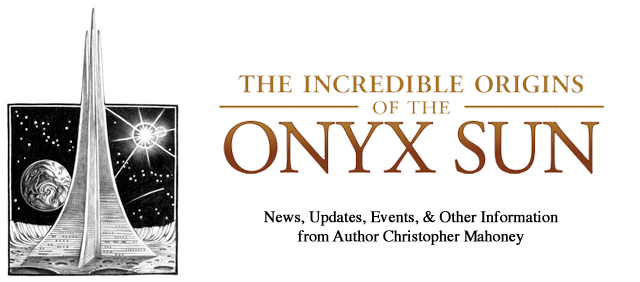What I Like About This Letter
- The quote in the header: I wanted to make an immediate impression with the tone of the book and my writing style. Agents always say they want the sample chapters to immediately impress them with the writer's unique style and that a writer should include that style in the writing the query letter. I decided to front-load this and integrate some sample text, that doesn't actually appear in the book, into the query letter.
- Personal connection: Much of the material I read on writing query letters said you should try to personalize your story to the agent. So, the second paragraph, where I discuss what space meant to me, and means to all kids, I thought achieved that
- Closing: It's a little uber-entrepreneurial, but I think the comparison works between trusted networking of investor/advisers and agents/advisers.
What I Don't About This Letter
- Length: It's too long. Some of the wordiness in the synopsis and qualification sections could be reduced.
- Non-germane credentials: My writing credentials section doesn't contain enough pure writing qualifications. At first I thought showing I could sell a book might grab an agent's attention, but I realized after a while this section should focus on more pure publication qualifications.
- Word count: I should have kept it simple. 79,900 words is basically 80,000. Now, I just round up/down to the nearest 1,000.
--- BEGIN LETTER ---
“Who could have guessed the small, black cube that helped man colonize the stars could also be used to wipe out humanity? Whoops. Sorry about that.”
- Geoffrey Gumbean, Chief Research Scientist
Excerpt from the Senate Inquiries into the Uber-abnormal Affairs of the Onyx Sun
Specific Person
Agency
Address
Address
Dear (Agent/Editor’s Name):
I am seeking representation for my young adult novel, The Incredible Origins of the Onyx Sun, complete at 79,900 words.
As a child, I loved the boundless imaginative possibilities the exploration of space offers. These dreams are now becoming reality as entrepreneurs like Richard Branson and Elon Musk lead us back to the stars. Thanks to their efforts, today’s children will be the first generation of citizen-astronauts, and books like The Incredible Origins of the Onyx Sun may inspire them to continue the journey. As Dr. Sally Ride stated, “Our future lies with today's kids and tomorrow's space exploration.” These words were never truer.
The Incredible Origins of the Onyx Sun follows the story of Zack Goodspeed, a fairly average ten-year-old, who discovers his genius-inventor grandfather has secretly built man’s first interstellar spaceship. By stowing away on this ship, Zack is thrust into a series of adventures that land him on the Moon, throw him into life-threatening situations, and culminate in his saving humanity itself.
The Incredible Origins of the Onyx Sun is the first book in a series. I am currently working on the sequel, The Wicked Adversaries of the Onyx Sun.
Book Synopsis
Zack Goodspeed is a perfectly normal ten year-old boy, growing up in a perfectly normal suburb. His friends are all normal. His teachers are normal. His mother and father are practically Mr. and Mrs. Normal. Everything in Zack’s life is exceptionally normal save one thing: his grandfather, Fyodor.
By any measure, Fyodor Confucius Goodspeed is just plain whacked. He towers over most people at six-feet, six-inches tall. He wears only white, because he can’t bother to spend time matching his pants to his shirt to his socks. He stumbles about, distracted by inner thoughts, like someone who just learned to walk.
Yet, Fyodor is an incredible genius who has just built man’s first interstellar spacecraft powered by a small, black cube called the Onyx Sun. The Onyx Sun is Fyodor’s greatest invention. The Onyx Sun provides unlimited power. The Onyx Sun whisks Zack away on a series of adventures into space.
Freed from his earthbound normalcy, Zack walks on the Moon, meets bold, new friends, and learns how to pilot skyscraper-sized robots called “Mech Leviathans”. Ultimately, he saves humanity from Dr. Ian Machvel, an antagonist whose one aim is to pervert the Onyx Sun into a weapon of mass destruction. In the process, Zack faces many issues relevant to today’s young people, including confronting terrorism, gaining self confidence, and appreciating one’s family.
Credentials
I have been writing stories since I was eight. At Northwestern University, I studied economics but found Atlas Shrugged struck me deeper than Keynesian economics.
I have published a poem which appeared in Summer Shade: a Collection of Modern Poetry. Until recently, I managed a literary company called Pariah Publishing (www.pariahpublishing.com), where I gained insight into the dynamics of good writing through personally reviewing and critiquing over 400 manuscripts. I am currently a Product Manager for Riverdeep, an educational software developer, where I frequently interact with children in my book’s target demographic.
I am an MBA graduate of Babson College, the #1 School for Entrepreneurship in the US, where I won the prestigious Price-Babson Fellowship and conducted research under Stephen Spinelli, the man who built and sold Jiffy Lube. Accordingly, I understand the business commitment required to launch successful ventures, like a new book. I also co-edited publications from the tenured professors during this time.
Agency Representation
Much as an entrepreneur seeks investors who can provide business acumen as well as financing, I am looking for an agent who can provide credible feedback on my work as well as representation. In my research, you have consistently arisen as such a source. I wish to submit my manuscript to you and (agency name here...in this case, as my first choice, it was Writers House), exclusively and foremost.
Sincerely,
Christopher Mahoney




